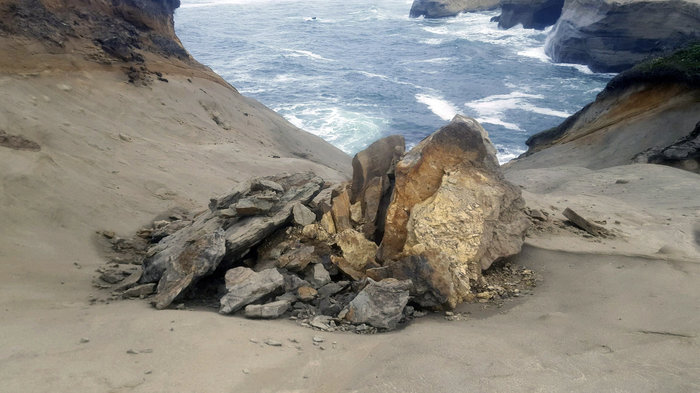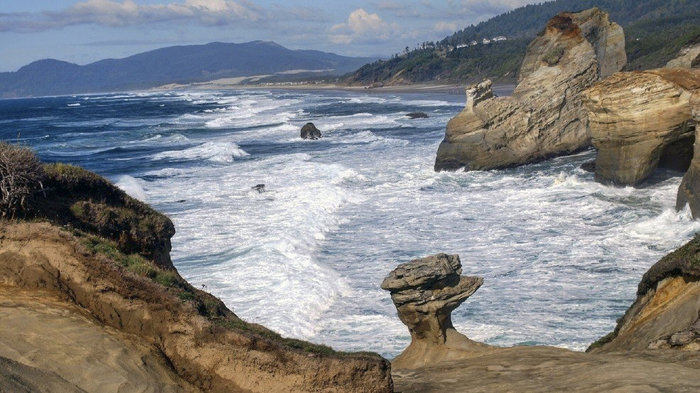But commenters have noted that many of those images show people standing or posing on top of the rock — meaning they, too, hopped over the fence meant to keep visitors away. (Several Instagram users, including the one who posted the photo above, say there was no fence at the time of their visit, but the Statesman Journal says the area has had a fence, and warning signs, for decades.)
And whether or not that was hard on the formation, it was definitely risky for the rock clamberers.
In fact, the Statesman Journal reported just a few months ago on the dangerous allure of the rock.
A picture atop the now-collapsed pedestal was "one of the most sought-after images" of the Oregon coast, the paper wrote in July — but getting the shot required evading that fence and crossing to a perilous bluff.
"Seven people have died in the area since 2009. Six fatal falls have taken place during the past two years. Rescue efforts by the local fire district and U.S. Coast Guard cost upward of $21,000 per hour, often topping out near $106,000," the newspaper wrote.
"Yet people continue to flood past the fence and signs. Adults, teenagers, grandparents, photographers and even parents with small children disregard the warnings."
A park ranger was assigned to patrol the fence, but "combating the allure of that perfect picture — that happy couple perched on a natural pedestal above the ocean — will be no easy task," the Statesman Journal wrote.
But now the perfect photo is impossible — raising a question. Might vandalism succeed in keeping visitors away, where safety warnings failed?
Copyright 2016 NPR. To see more, visit http://www.npr.org/.
9(MDAxOTAwOTE4MDEyMTkxMDAzNjczZDljZA004))


9(MDAxOTAwOTE4MDEyMTkxMDAzNjczZDljZA004))
